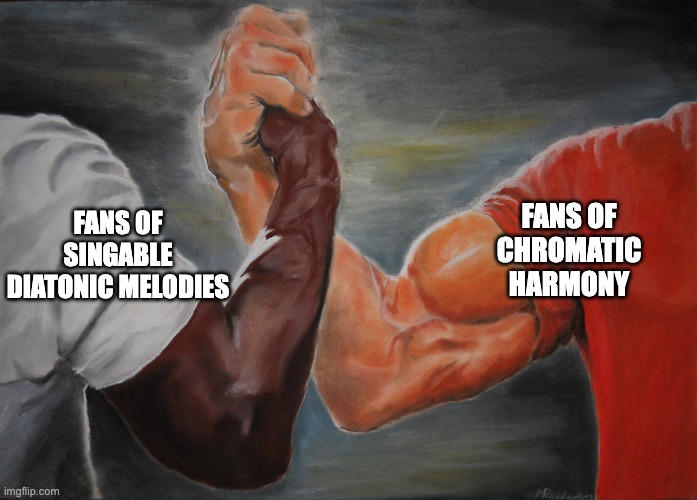This song’s strange chords become easier to make sense of if you keep in mind a few things:
- Brian leans hard on inversions to confuse us, and tricks learned from 40s jazz and classical.
- The key is E major, but the verses begin “in the ii key”.
- The whole instrumental vocal section is just transposed up to A major.
The intro ends with a taste of the chorus.
IV I ii IV
A E/G# F#m7 A/E
Brian then slides this A/E up to D/A, which doesn’t make a whole lot of sense in E major; he’s heading to the ii key (F# minor).
He starts with b6, 2, 1 in F# minor, then he returns to the home key of E major with a more standard jazz ii – V – I, but with more inversions to make unusual bass voice leading:
f#: bVI ii i
E: ii V I
D/A G#ø7/B F#m B7/A E/B
Those inversions are key here to keeping up a bit of tension, and he won’t release that tension with a root-position chord until the chorus. Let’s carry on:
I vii I vi
E/B D#dim7/C E/B C#m/A#
Almost everyone calls this second chord “Cdim7” but really this is the leading tone °7 chord of E with notes D# F# A C. Mostly diatonic to E major. Even though the bass rises, the harmony is really dipping down into the vii° and back to the tonic.
(Now consider “Cdim7”. It has the notes C Eb Gb Bbb because it’s the vii of the nasty key Db minor (Db Eb Fb Gb Ab Bbb Cb). All the flats alone should be a clue this doesn’t make sense in a sharps key like E major. I’ve found naming dim7 chords correctly has helped my understanding of them greatly. YMMV.)
That last chord is sometimes written “A#ø7”, but here it’s not really functioning as A# half-diminished, which would move to D#7 – G#m. This is really just a C#m chord with the bass on the 6th to give it extra flavor (hear C#m – A – E vs C#m/A# – A – E). This 6th-in-the-bass is done all the time on minor chords in 1940s standards to add tension that can then be released, just as Brian does when A# falls to A for the chorus.
The verse repeat is followed by a full transposition up a 4th, playing the whole verse and chorus in A:
B: bVI ii i
A: ii V I vii I
G/D C#ø7/E Bm E7/D A/E G#dim7/F A/E
A: vi IV I ii IV
F#: bVI ii
F#m/D# D A/C# Bm7 D/A G#ø7/B ...
Notice when Brian ends up at D/A, he seizes the opportunity to jump right back into the original F# minor bit of the verse. That’s how he manages to end the song in E major.
